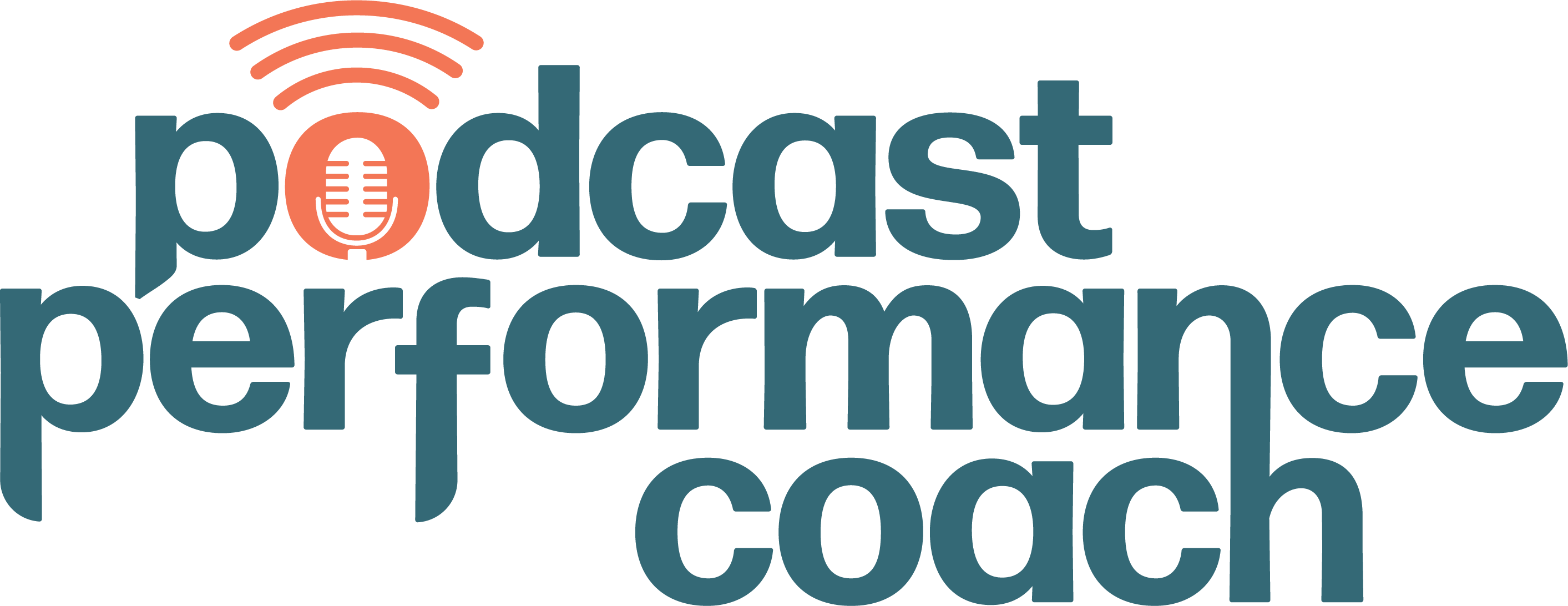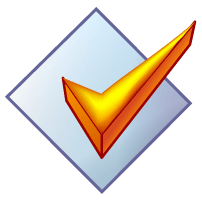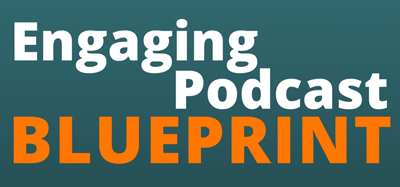STOP WASTING TIME RESEARCHING PODCAST EQUIPMENT
Here’s a list of some of the equipment I use and why. I get a small kickback from amazon. I know this will save you time.
PODCAST MICROPHONES
When it comes to a podcast microphone, don’t use your on-board or internal mic from your laptop. And don’t use your phone. If you’re serious about your podcast, you want a piece of equipment that will do a solid job without breaking the bank. There are a lot of options to choose from. Your budget, or recording environment may may help you determine the best equipment for you.
Option 1
I’d say the MOST POPULAR (entry level) PODCAST MICROPHONE today is the Audio-Technica ATR2100-USB Cardioid Dynamic USB/XLR Microphone. (Approx $100 US) A tonne of podcasters, including many of my clients use this mic with great results. It’s the best mic at this price point hands down. Super simple set up. (Or it’s twin: the Samson QU2) Plug it directly into your laptop or computer using a USB connection or if you’re using a mixer, you have the option of using the XLR connection (the 3-prong/pin connector). If you’re just getting started and want to sound great. Buy this mic. Don’t waste any more time looking. Seriously. You’ll come back to buying it anyway.
Option 2
One step up from this mic and still staying super simple (plug and play) is the Shure MV7 Dynamic podcast USB/XLR Microphone. This mic offers a few more bells and whistles like gain control (volume input) right on the mic itself. It’s a little better at cancelling out other room noise and has a little more bottom end to it. But you pay for it. Remember, you or your editor will likely be adding a little EQ to any mic you buy so you need to ask yourself if the price difference is really worth it. It’s definately a sexier looking mic and the sound is great!
Option 3
Next Level Up is the Electro-Voice RE320 Large Diaphragm Dynamic Vocal XLR Microphone, little brother to the legendary Electro-Voice RE20 Broadcast Announcer Microphone. I chose the RE320 because I find it a little ‘brighter’ than the RE20. This mic will make you sound like a pro. It’s full and rich and does a great job at eliminating background sound. I’ve used the RE20 in a lot of the radio stations I’ve worked in. This is NOT a USB mic. You can’t just plug it into your computer. You’ll need an audio interface (see below).
Option 4
This is another radio station mic that I’ve used many times over my career. It’s the other broadcast “legend”, the Shure SM7B Vocal Dynamic XLR Microphone. This is the mic Joe Rogan uses. Sadly, it doesn’t instantly produce 3 million listeners. You need to do that on your own. It’s right up there with the RE20 in terms of sound. At this level it’s personal preference but I’d challenge you to tell the difference between the 2. If you can’t, you’re listener won’t either. This is one of the best (and most expensive) podcast mics you can buy. This is NOT a USB mic. You can’t just plug it into your computer. You’ll need an audio interface (see below).
Option 5 (not a real option)
The Yeti or Blue Yeti or Yeti Pro or anything to do with the Yeti. I don’t recommend any Yeti microphone. It’s not the mic, it’s how people are using the mic. First, most people don’t use it the proper way, vertically. A lot of people talk into the top of it which is incorrect. Secondly, it’s a condenser mic. Essentially it’s tries to pick up as much sound as possible, so if you’re more than and couple of inches away from it, it will be picking up your computer, your air-conditioner or furnace, a fan, etc. And thirdly, in order to get the best out of the yeti, you need a near perfect recording environment. Pretty much a sound booth. So save your money and DON’T buy a Yeti microphone for podcasting.
For any of these mics to work their best, you need to have good space to record in. A soft room is best. Here is a quick 5-minute episode on getting the most out of any mic you buy.
POP SCREEN or WIND SOCK
Yes, you need one of these. They both will do the job. I use both (on different mics). Either one will help prevent you from popping your p’s (see my youtube video tutorial on proper mic placement). The POP SCREEN will attach to almost any stand. The wind sock will help too. Just make sure it fits your mic. The ATR2100 Sock.
HEADPHONES (wired)
Yes, you’ll want a good pair of wired headphones to monitor your recordings. Here’s why. Don’t go too cheap. And do NOT use wireless headphones – they can cause audio interference. The important thing here is comfort. You may be wearing them for some time. You want a pair that will cover your ears too. This will let you hear everything. Plus you’ll sound amazing to yourself!
You may want to go down to a place like bestbuy to try a pair on.
I have a pair of these and love them. (Make sure to purchase the WIRED version)
Audio-Technica ATH-M50x Professional Studio Monitor Headphones, Black
One step down are these – Audio-Technica ATH-M20X Professional Studio Monitor Headphones
PODCAST MICROPHONE STAND
Okay, the key word here is stand. Stand when you do your podcast. What? You don’t? Here’s why you should stand and not sit when you record your podcast. I’ve included 2 stands (or mic booms) that will attach to your desk and 2 that sit on the floor. I know, a stand that sits, HILARIOUS! It depends on the microphone you have. You don’t need anything fancy here. Read the reviews. And pick the one you look. I’ll search the reviews to see if anyone is using it with my specific mic.
Floor Stands:
CAHAYA Tripod Microphone Stand Boom Arm Floor Mic Stand with Carrying Bag and 2 Mic Clips
On Stage Stands MS7701 Tripod Boom Microphone Stand
Desk Clamp Mic Stand (Boom)
Eastshining Upgraded Adjustable Microphone Suspension Boom (Perfect for ATR-2100)
Neewer Microphone Arm Stand, Heavy-Duty Mic Arm Microphone Stand Suspension Scissor Boom Stand
Some people manhandle everything and break everything they touch. Treat your gear right and it will last. Just to get you off your ass when you podcast. (The ATR2100 comes with a very tiny tripod that sits on your desk. If you don’t buy a stand you’ll be either hunched over or have to build up a platform of boxes and books to raise it. Just buy a stand.)
PODCAST AUDIO INTERFACE MIXER (AMP)
If you’re using an XLR (3-prong/pin) mic you need what some refer to as an amp, mixer or interface. My new favourite interface is the Focusrite Vocaster Two. This new (digital) version of the interface travels well has auto level set, EQ presets and as bluetooth capabilities for phone interviews (not that you should be doing that). I use this as my main input console in my home studio and take with with me on the road when traveling. It’s so smart and easy to use with great support. Hands down my first choice. If you think running software AND hardware is too much, stick with the Focusrite Scarlett 2i2 USB Audio Interface. It allows for 2 mics or 2 instruments plugged into it. This unit then connects to your computer with a USB cable (just like the Focusrite Vocaster Two. If you want more than 2 channels you’re going to need more equipment. Any little mixer like this that connects to your computer using a USB will only give you 2 (left & right) channels. Most podcasters don’t need more than 2 inputs and this little box travels well too. But if you need more than 2 inputs look to the 8i8. But they may be better options depending on your specific needs.
**NOTE** If you choose the RE20, RE320 or the SHURE SM7B and you pair it with the Scarlett Audio Interface listed above, you will need a (gain) boost to get more sound and room to play with the sound or you will be maxed out on the Scarlett. The Focusrite Vocaster Two DOES NOT need the boost. It’s got enough juice to power these mics.
This is a PLUG-IN Preamp (boost) and is necessary (for the 2i2) for these XLR mics:
sE Electronics DM1 Dynamite 1-Channel Active Inline Preamp
PODCAST RECORDING/EDITING SOFTWARE
There are plenty of choices for audio editing software. I use Adobe Audition (for Windows). It’s extremely versatile and has all the capabilities and tools you need to record, mix, and export your podcasts. Another program that can do the job is Audacity. It’s free and easy to learn. If you’re on a MAC, Audacity will do the trick just fine or use Garageband. It came with your computer. Just search for it.
No matter the software you use, take some time to learn it. Record a few fake podcasts. Play around. Spend some time with it – there are plenty of online tutorials to help you learn. But, once you find the one you like best, stick with it. You’ll continue to get better and better at it. Before you know it, you’ll be building templates, using shortcuts and mixing with the best of them. Don’t give up – you’ll get there.
PODCAST GUEST RECORDING SOFTWARE
If you are planning on guests on your show you’ll need to record them over the internet. There are a few options. Some free but with limitations. This will depend on the length and frequency of your show. Some platforms will require you to level up for better audio quality too.
My top platforms are Riverside, Squadcast, or Zencastr. Many podcasters use zoom for recording their interviews but zoom quality isn’t the best in my books.
The 2 most important things to consider are .WAV file recordings and separate track recordings. (.mp3 files will do just fine too)
PODCAST RECORDING HARDWARE
If you are looking for an all-in-one, take on the road (optional) recorder, look no further than the Zoom PodTrak P4 Podcast Recorder. This little machine was built for podcasters. It has 4 XLR inputs (which you don’t need preamps for). This is a high quality audio recorder. You could just use this instead of your computer. Plug your mic(s) in and record onto an SD card. It runs on DC/USB or battery (4-AA) power. Records on separate tracks too. This could be all you need!
SD Card – This will work with the Podtrack P4.
SanDisk Extreme Pro 32GB SDHC UHS-I Card (SDSDXXG-032G-GN4IN)
USB C Type Cables, INIU [3 Pack] for the PodTrack (optional)
PODCAST HOSTINGS SERVICES – Libsyn Promo Code ‘TIM’
I host with Libsyn and so do thousands of other podcasters. They do it right and they’re not going anywhere any time soon.
Launch your podcast on Libsyn using the Libsyn promo code ‘TIM’ and get 2 free months*
If you’re going to start a podcast, and you’re going to take it seriously, then you will need a podcast host. If you don’t know what a podcast hosting company does or how it works, it’s pretty straight forward. You upload or ‘publish’ your finished mp3 files (podcast episodes) to a host like libsyn, then listening platforms like Apple Podcast (iTunes), Spotify, Google Podcast, Stitcher and others pull your RSS feed into their players making it available to podcast lovers.
Their reliable and stable hosting packages start at $5 a month. The price will depend on the level of services and depth of stats you want. I use libsyn and recommend it to all podcasters. See their hosting plans and prices.
Use the Promo code ‘TIM’ when you sign up to receive the rest of your first month free* and your second month free.
*NOTE*
- This code is only good for new accounts. It won’t work when adding a new show to an existing account.
- To get the most out of this promo code, use it on the 2nd day of the month. Libsyn bills on the first of the month. So, if you can, use it early in the month to get the rest of the first month and your 2nd month free.
- Be certain of the hosting plan you choose. Because if you change it before the promotional period is over you will be charged the prorated amount of that new plan for the first month and lose the 2nd month. Same thing if you change plans during your second month. You’ll start being charged immediately. You can always downgrade or upgrade anytime. Just wait until you’re into your 3rd month so you don t get burned.
- Happy Podcasting
PODCAST WEBSITE – Yes you need one!
If you’re podcasting for your business, you need a website for your podcast.
But you might be asking, can I put my podcast on my existing business website? The answer is YES! If you podcast shares the same name and branding as your business then absolutely. You’ll want to use the BLOG functionality of your website and run each episode like you would a blog post. Quite easy to do. This however DOES NOT replace your podcast host (Libsyn for example). You don’t want to host your mp3 audio on your website. Libsyn acts like the distributor to all podcast platforms (using an RSS feed). Using the blog functionality on your website you’ll still need to create a post, add your show notes and embed a player for each post.
But there is another way!
If you don’t need or want your podcast on your business website, then HANDS DOWN, THE ABSOULUTE EASIEST AND FASTEST WAY TO CREATE A WEBSTE FOR YOUR PODCAST IS WITH PODPAGE.
Podpage is an all-in-one, done-for-you podcast website platform that automatically updates when a new episode is released (through your RSS Feed).
Many of my clients use it and love it! – It’s one less thing they have to do.
I obviously have this website, but I also created a PODPAGE website for you to check out (a free version from a few years ago). There are many ways to customize the layout, add additional pages and links and you also can assign a custom domain to it. All for $12/month (as of the time I’m writing this).
Once you set it up, you’d don’t have to touch it. It updates automatically! It’s amazing!
STOCK MUSIC SERVICES
Have you spent hours, that turn into days trying to find FREE music for your podcast? Here’s the problem with free. Free is shit. BUCK UP. For less than $20 you can find a great piece of music that will fit your brand that you can use forever. I’ve been using Audio Jungle for years. I do a lot of video production that requires a butt-load of music. Trust me, there is more than a ton of music on audio jungle. Most tracks will cost you around $19 with the regular license fees. It’s totally worth it unless you want to use the exact piece of music that all the cheap podcasters are using for their theme song. Find your music here.
ID3 tags with MP3TAG
ID3 Tags are worth doing but you hate doing them, I know. So do I. This little program makes it easy and almost entirely automated. It’s called MP3TAG ad it’s FREE! Ever download an mp3 and there is NO information attached to it. ID3 tags carries your artwork and a whole lot more. That way if someone just downloads an episode from your website, all that gorgeous info pops up on their player. Here’s MP3TAG the program. And here’s a great tutorial I found from James Kennison on how to use it.
WEBHOSTING & DOMAINS
Talk about confusing. You can read a million reviews on different hosting providers and as many great things you’ll hear about one, you’ll hear the same number of horror stories about that same company. I’ve been with 1and1 for a long time. Every host provider has issues. I’ve got over 2 dozen domains and it feels like I’m building another website ever couple of months. I just keep building more sites within my same account. I’d recommend one of their web hosting UNLIMITED packages. Their back-end is easy to use and their 24/7 support although not perfect (whose is?) can be amazing when you get the right person on the other end of the phone. Plus, their domains are really reasonable. Click Here.




